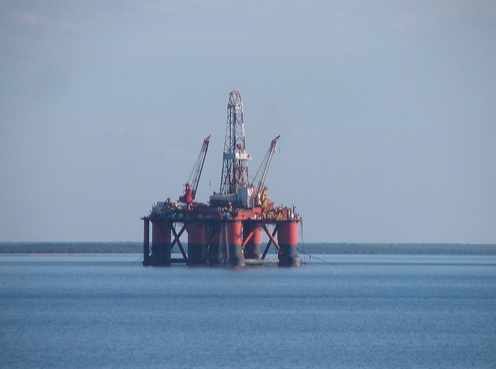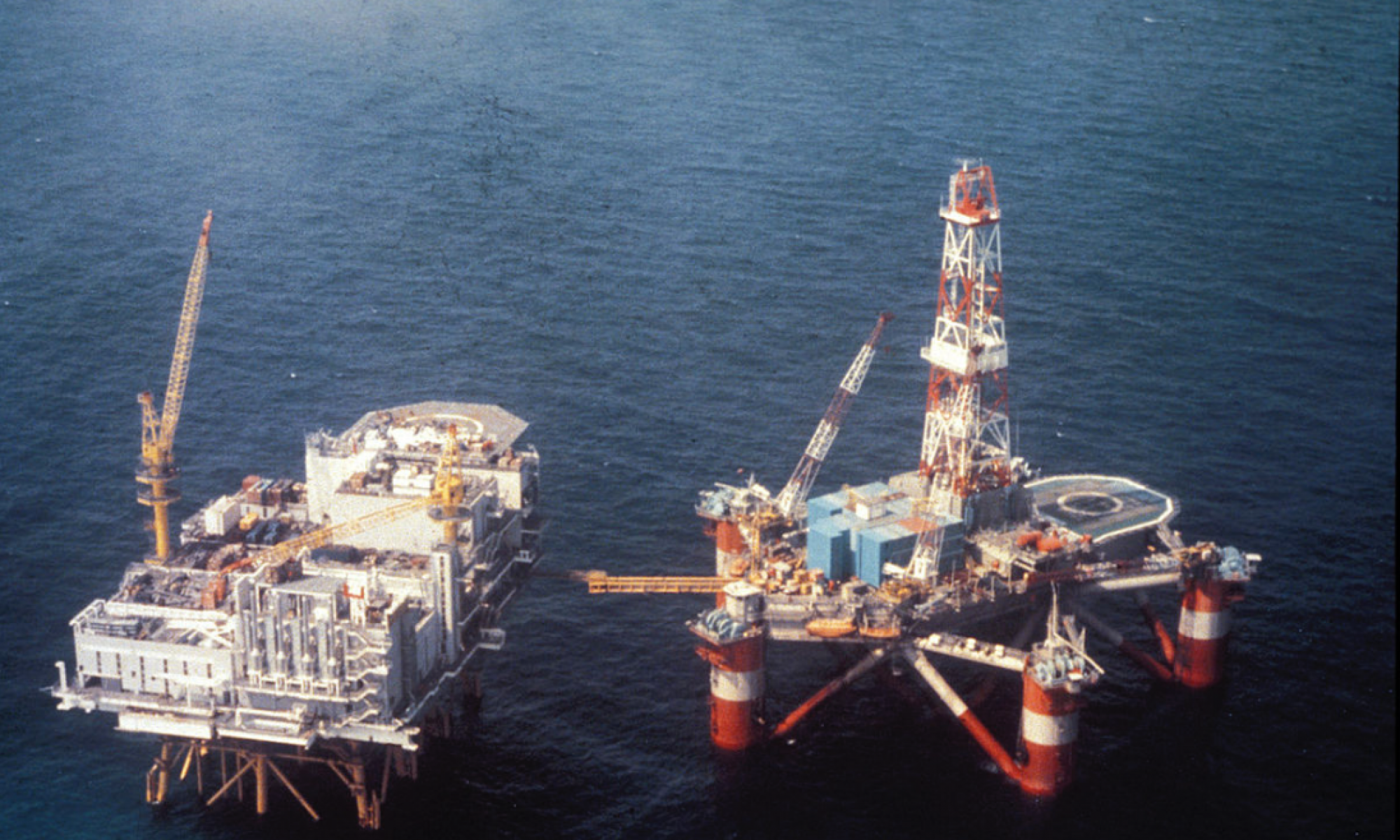Being offshore on an exploration drilling rig rather than at sea in a ship has one obvious difference -the rig is stationary. Indeed it is held over a fixed location, the subsea well head, by anchor chains and gyroscopically controlled thruster propellers located at each corner of the structure.

During calm summer conditions when the North Sea is like a mirror with the setting sun on the unobstructed horizon it can be surreal.
Despite the constant dull drone of the diesel generators and the clanking of the rotating drill string being slowly driven down by it’s diamond tipped drill bit, through solid rock miles below the surface, looking out over the deep blue sea and sky all around felt like being in space.
A sense of calm and privilege would overcome me.
One hour and twenty minutes flight time from our company base in Stavanger, Norway. I, alone, was responsible for accurately running the wireline logs that would allow the geologist and company men aboard to decide to keep drilling or cement up the hole and seek a better location to explore.

In the mid 1970s no computers.
Analogue graphical results on photographic film would be enough for us to make those expensive decisions.
Every time I developed one of the rolls of exposed log film, which could be over six feet long, I always checked – Developer closest, Wash then Fixer.
Get that order wrong and the log would have to be rerun.
Tens of thousands of dollars worth of extra rig time plus the chance of getting our equipment stuck down hole in the now uncirculated thick drilling fluid and rock chippings.
I always prepared our unit’s little darkroom myself.
Developer tank closest then the Wash tank then furthest away the Fixer tank. D-W-F.
Some engineers left this preparation to their crew with sometimes tragic results.
“But my usual engineer prefers the tanks in this order….”
